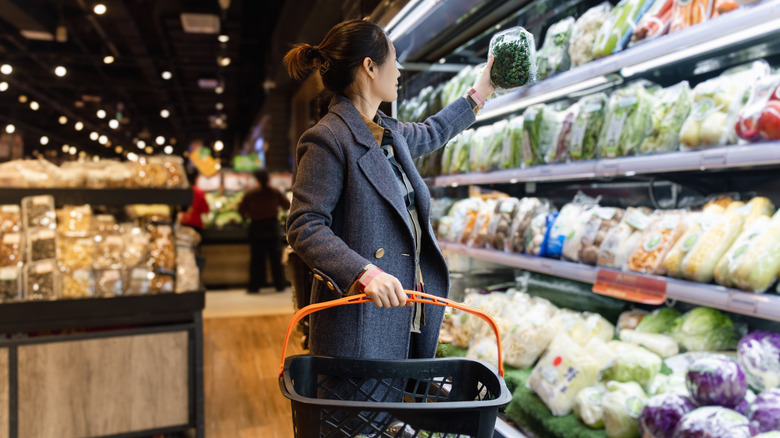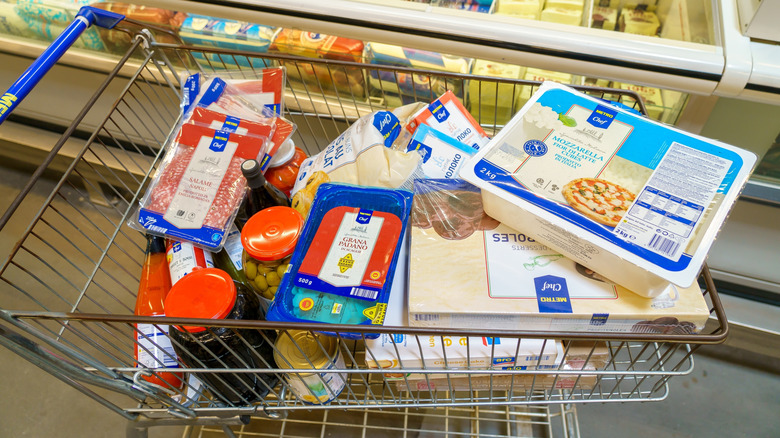The Tip To Follow When Buying Perishable Items At A Grocery Store
Shopping for groceries, especially when you're doing a major restocking of the fridge, requires some planning. Coming back home and realizing that you've forgotten to buy milk is frustrating, and no one wants to make a double trip to the grocery store (unless, of course, it means another visit to Costco to try out more viral food court hacks). When making a list of groceries to buy, keep these two tips in mind — the first, of course, is to double-check your list to make sure you haven't forgotten anything. The second is to order the items so that you pick up the perishable ones last.
Since you can end up walking through the isles of a grocery store for a while, it make sense that cold or frozen items can start to warm up and degrade. This isn't true for just ice cream and popsicles, as perishables like meat, cheese, and eggs are also susceptible to spoiling if left at room temperature for extended periods.
By the time you bring your groceries home, such perishable items have already spent a significant amount of time outside of their ideal storage conditions. To give delicate foods the best chance and ensure they're in good condition when they're consumed, pick up the rest of the groceries on your list before getting to the perishable items.
When buying groceries, pick up perishable items and frozen foods last
The FDA advises refrigerating meat, poultry, seafood, eggs, and other perishable items within two hours of purchasing, and even sooner on a hot day. Meanwhile, canned foods, bread, sauces, and many other items can safely sit in the shopping cart for much longer.
While the produce section is often seen immediately upon entering a grocery store, picking fruits and vegetables up first could result in them getting squashed by other groceries as your shopping cart fills up. After taking the time to pick the best avocado from the pile, you don't want it getting dents, after all. Either carefully set aside a section in your cart for delicate fresh produce, or pick it up later.
Your final stop should be the refrigerated and frozen sections for meats, dairy, and cheese. All of these should spend as little time as possible at room temperature. Once you've picked them up, head straight to the cash counter and then home to put them in the fridge. Even if you're about to cook the frozen food you've bought at the grocery store as soon as you get back, letting it thaw in your shopping cart is not ideal. Frozen foods should either be thawed in a fridge, cold water, or the microwave. It may take slightly longer (here's how long a turkey takes to thaw in the fridge, for instance) but it wards off spoilage and helps ensures the best cooking result.

